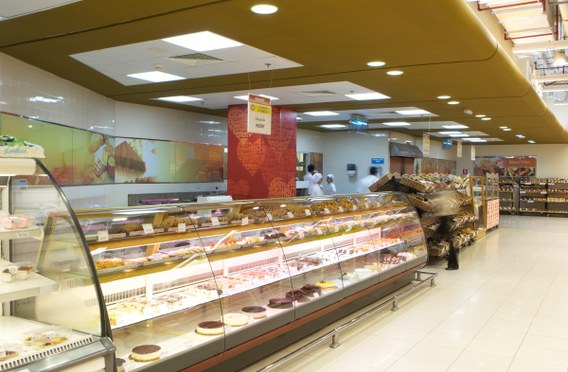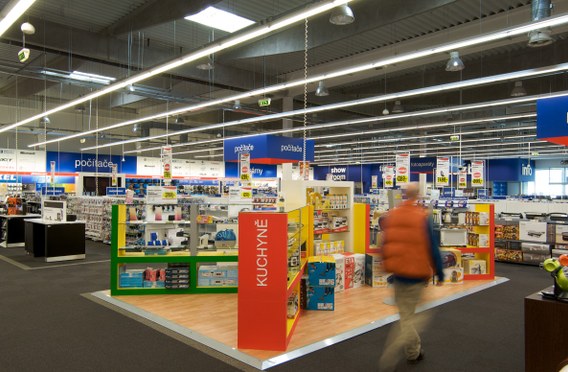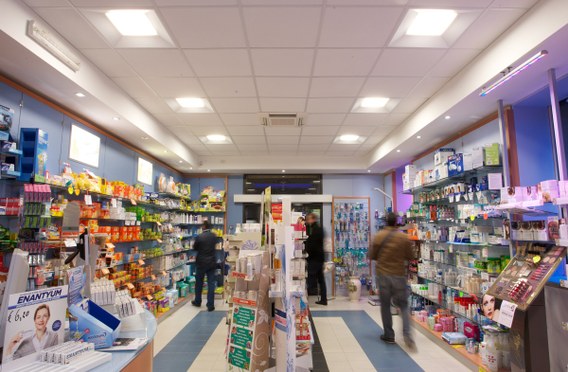Retail
Creating the right environment
The retail environment is concerned with creating appealing spaces where merchandise may be displayed in a manner that makes it desirable to the customer. Retail spaces frequently have a target customer profile and the design and lighting of the space and product sold should reflect this, and for larger retail chains it should also reflect the corporate styling and image. The customer experience should start with an attention catching store-front, pass through a welcoming entrance into an exciting or interesting store interior, depending upon the customer profile, containing well-presented goods and friendly and approachable staff that help in the process of selecting and purchasing merchandise, and finish with the customer leaving satisfied with the entire experience and ready to return at some future date. The correct lighting that creates the right environment for the customer is a pivotal part of this process.
Best practice
There is limited formalised guidance for retail spaces. The European Standard EN 12464-1:2011 Light and lighting – Lighting of work places Part 1: Indoor work places provides recommendations for key points in a store but does not provide advice on many aspects of retail lighting.
Lighting should be a guide to direct the customer to key points. The lighting should be layered with general lighting providing a background light level allowing safe movement and orientation, accent lighting which is used to highlight the merchandise but also creates an ambience, and decorative lighting which directs the eye to points of special interest such as key products. So in the context of the store general lighting would ensure adequate light on circulation spaces, accent light would raise the lighting level on merchandise to show off the store goods, and decorative light would highlight product promotions and key products in dedicated display stands. It is important to limit the number of decorative or focal points otherwise the key message will become lost in the visual clutter of competing attention highlights. It is also necessary to decide how much the highlighting should be used to make a product stand-out. For subtle highlighting the product should be lit to approximately five times the lighting level compared to its background. For moderate highlighting this rises to fifteen times, for strong thirty times and for dramatic fifty times. However these should be used as part of a coherent design and care should be taken to preserve the overall balance of lightness in the scene. Customer care points such as cash tills and service desks should also be accented to aid in customer orientation.
Part of the less-visible merchandising of a store is the appearance of the staff. Ensuring lighting of staff so they appear friendly and so that body language is readily visible is important in projecting a friendly and approachable image. EN 12464-1:2011 provides recommendations for cylindrical illuminance to ensure good lighting of verticals, 150lx at 1.2m height. It also discusses the modelling index, the ratio between the horizontal and vertical flow of light to provide the correct balance between light and shade, and gives recommended values.
Taking control
In retail lighting it can be considered that a store slowly wakes up in the morning with staff arriving and any routine procedures being performed before shop opening, the shop then opens for customers. After the shop closes cleaning and restocking will take place before the staff leave in the evening. The lighting should therefore reflect this with easy scene setting allowing the correct lighting to be active at each point in the day.
As many retail areas use raised lighting levels to attract customer attention, and therefore a higher level of installed lighting power, it is important that luminaires and light sources are efficient with modern electronics to allow dimming. Consideration should be given to the use of dimming linked with dynamic scene setting to create moving areas of light, creating more stimulating spaces that help retain customer interest.
For back of house areas presence detection should be used to prevent unnecessary lighting being active in empty areas.
Key products for this application are:
Retail Case Studies:
Generous lighting levels and good colour rendering are particularly important where food, drink and consumer products are concerned. Other important performance considerations include safety, comfort and of course, efficiency. The Case Studies section demonstrates how careful product selection can precisely meet all of these needs.



